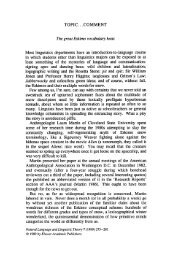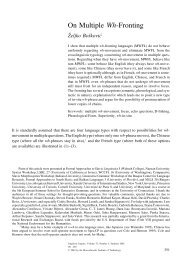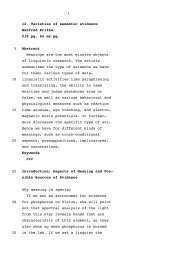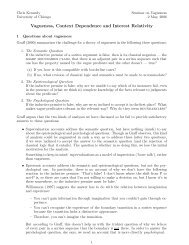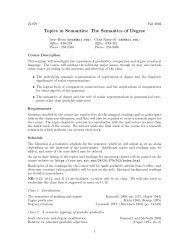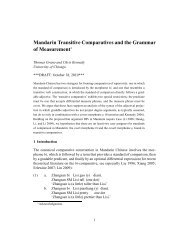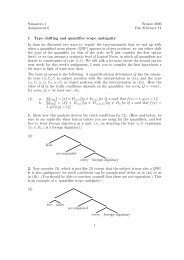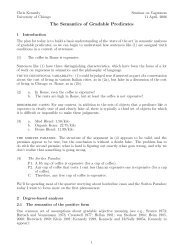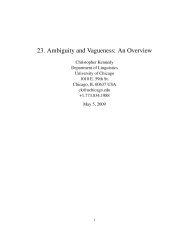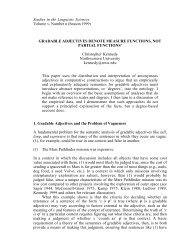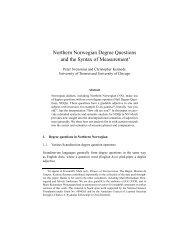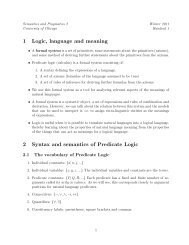On the natural history of negative polarity items - Syntax, Semantics ...
On the natural history of negative polarity items - Syntax, Semantics ...
On the natural history of negative polarity items - Syntax, Semantics ...
Create successful ePaper yourself
Turn your PDF publications into a flip-book with our unique Google optimized e-Paper software.
Stephanie Solt & Nicole Gotzner<br />
We test <strong>the</strong>se predictions experimentally, following a method developed by Barner &<br />
Snedeker (2008) and Schmidt et al. (2009), in which subjects are presented with arrays <strong>of</strong><br />
pictures representing comparison classes with varyingdistributions,andaskedtoindicate<br />
which pictures could be described by a given adjective.<br />
Experiment 1. The first experiment involved 4 adjectives - large, tall, dark and<br />
pointy -eachpairedwithanarray<strong>of</strong>36picturesspanning 11 ‘degrees’ <strong>of</strong> size/height/etc.<br />
(respectively: eggs varying in size; cartoon characters varying in height; gray squares<br />
varying in shade; triangular shapes varying in angle). Four distributions <strong>of</strong> pictures over<br />
degrees were tested: Gaussian (largest # <strong>of</strong> eggs in medium sizes; fewer very small or very<br />
large); left skewed, right skewed, moved (Gaussian distribution shifted to overall greater<br />
sizes/etc.). The study was conducted online via Amazon MTurk in 4 versions (n=194).<br />
A linear mixed model revealed that <strong>the</strong> average # <strong>of</strong> <strong>items</strong> classified as large/tall/<br />
dark/pointy was significantly different across conditions (p



